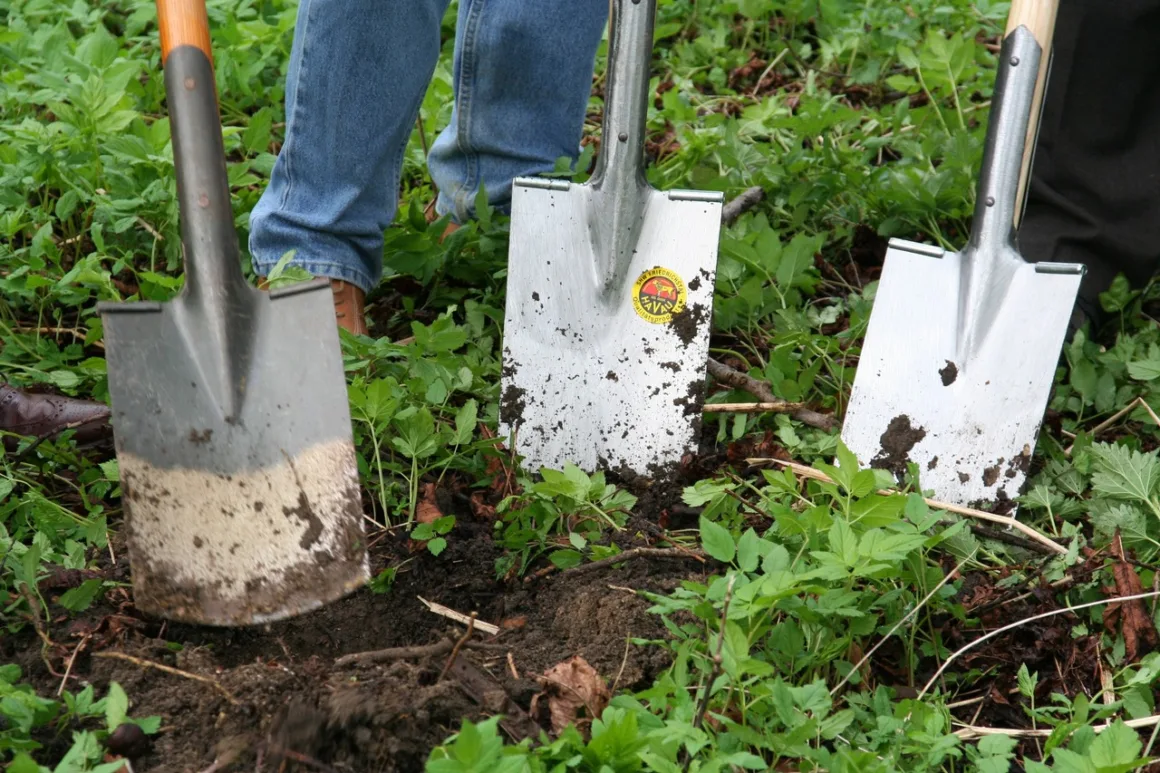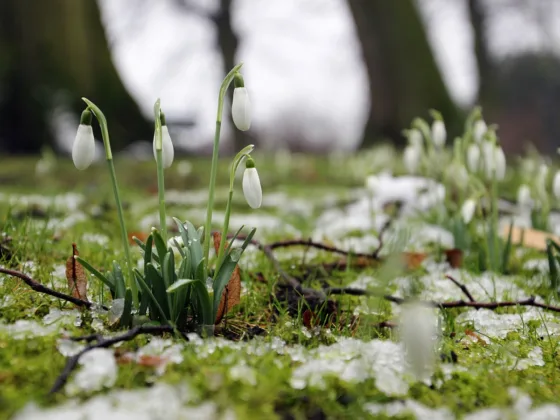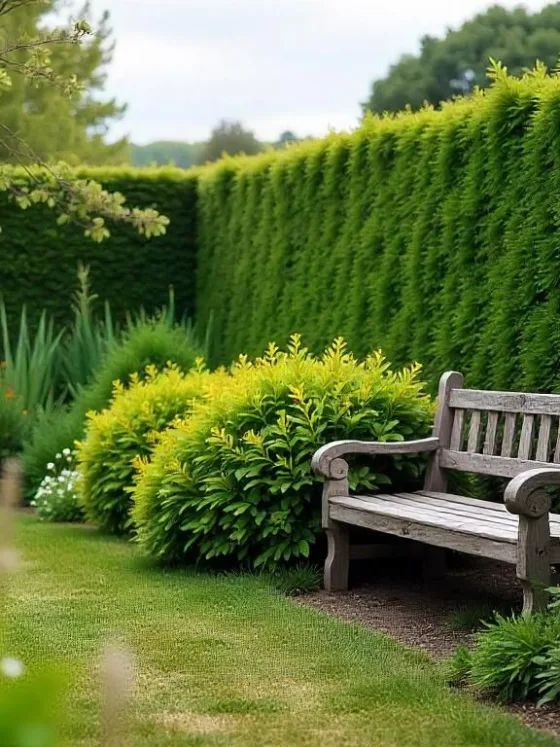Table of Contents Show
Plants are not the only things in your yard that will benefit from winterizing this fall season. Many times we take for granted that the tools we put away the previous year will be waiting for us in excellent working order come next spring.
Nothing could be further from the truth. The very tools which gardeners use really do require some TLC to ensure they are fit and functional when spring does finally emerge from under the blanket of snow.
This is especially the case when we northern gardeners are waiting with bated breath, hoe in one hand and digging fork in the other, for the first signs of spring.
Autumn is the best time to assess and repair your garden tools and give them a good cleaning. Remember, they are the key to the success of every garden.
To take a spade or a digging fork down from the wall of a shed or a garage only to have it break the first time you use it in the spring, can make the first attempt at gardening that season a great disappointment. And Northscapers don’t have the time or the patience to be disappointed when a new season is in the wings.
And so here I will describe some helpful tips to keep the tools of your trade healthy and ready for next spring.
1. Clean All Dirt From Any Metal Parts
This is extremely important as there are oxidizers in soils as well as iron that can corrode metal. In the ideal world you would clean your tools after each use, but if you are like me, all good intentions aside, sometimes that isn’t actually what happens. So at the very least make certain they are clean before retiring them for the winter.
Here’s how to best clean them:
- Fill a large bucket or pail with sand moistened with recycled oil (for example oil drained from your automobile or gas-powered tools)
- Immerse the metal part of the tools in the mixture
- Move the tool up and down gently; this action allows the sand to scarify the metal, which removes the dirt and impurities while the oil coats the exposed metal, making it less likely to rust over the winter
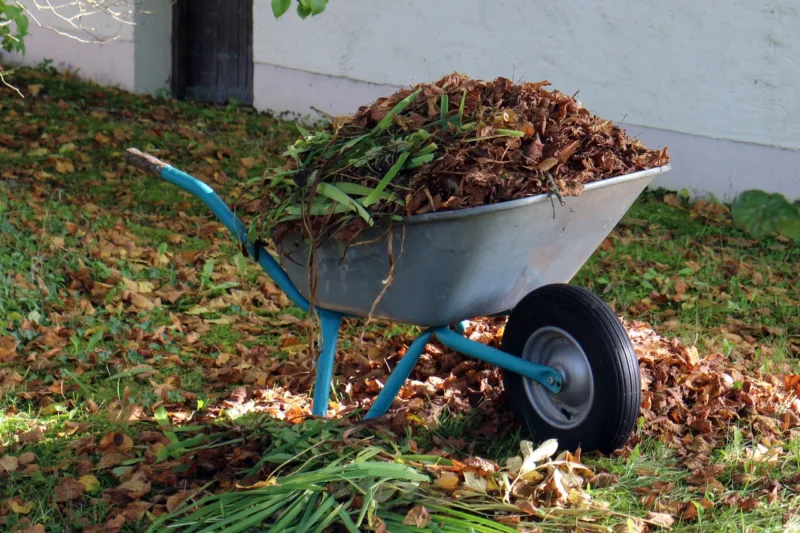
2. Clean and Preserve All Wood Parts
This is important as soils in dry cold weather can dry out handles, leaving splinters and making the wood susceptible to subsequent cracking. Clean all wood with a good wash of water followed by a light rubbing of medium to fine sandpaper.
Finally, apply a liberal application of linseed oil. The oil preserves the wood, keeping it from drying out too quickly. If the handle has severe cracks or is splintering excessively, it may be beneficial to replace the damaged handle.
This can be more cost-effective than having to replace the entire tool when it breaks in service, leaving you needing a replacement immediately.
3. File the Edges of Spades, Shovels, Axes, Hoes, and Digging Forks
The idea here is to create a proper bevel on these metal edges. The bevel should be at approximately a 20 to a 30-degree angle; this gives a good cutting edge.
A proper cutting edge on a spade can cut through thick roots in one step, while an ineffective edge can be downright disheartening. The bevel for spades, shovels, and forks should be on the inside of the edge (the side that carries the soil), while on a home, it is on the outside (the side that faces away from you when digging).
Whether you use a file, whetstone, or electric grinder, always remember to give the unsharpened side a quick pass too; this will remove any residual burs or metal filings that may develop during the sharpening process.
Read Also:
4. Sharpen and Oil Your Pruning Tools
Loppers and pruning shears require both sharpenings of the blade and oiling of the pivot points. When doing this, try to make all strokes in one continuous motion; this will ensure that a uniform bevel is established.
Do not bevel the side that moves against the anvil portion of the shear, because doing so would greatly reduce the function of the shears. Remember to apply a drop or two of oil to the pivot point(s) to ensure good motion and reduce sticking.
There is nothing more frustrating than cutting through a branch and having the shears jam because they weren’t oiled.
5. Wheelbarrows Require Some Winterizing as Well
Fasteners can loosen from vibration and torque. Also, the wheel is a moving part and aside from inflation of the tire, it should be given a liberal squirt of oil along the axle.
During heavy snowfalls, I have been known to enlist my wheelbarrow to haul the snow into a less congested area. Without winterizing, I may have had to deal with a flat, or sticky, tire.
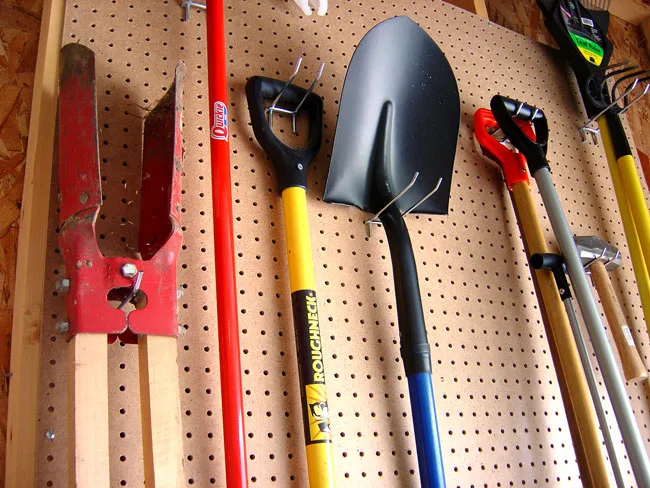
6. Winterize Your Watering Equipment
Hoses and sprinklers should be fully drained and stored away for the winter when no water will get into them. Water will expand when it freezes and can crack a hose or any enclosed portion of a sprinkler if not drained properly.
I like to hang my sprinklers to ensure they drain fully. Sprinklers are like comfy chairs; no two work exactly the same, and once you have one you like and it fits your needs, it is doubly difficult to see it damaged or in need of replacement.
Besides this list above, there are a few general tips to winterize the tools we as northern gardeners use to keep our yards in tip-top shape. All tools should be stored over winter in a dry place like a garage or shed. Some tools like a pair of pruners or a flat shovel may actually come in handy during the winter, so storing them in the basement may be beneficial.
I like to keep a pair of pruners handy so I can cut a branch or two in order to bring a piece of nature from outside into the house during the winter, especially if the branch has berries or is from an evergreen. And you can always force the flower buds in the doldrums of February…
Sometimes maintaining my tools takes a bit of time, but that’s not necessarily a bad thing. It helps to shorten the wait for spring to come along, and it gives me an excuse to get out in the yard and do some gardening.
Well, it’s time for me to start winterizing, so I’ll leave you to have fun the rest of the autumn. It appears that many Northscapers may be having a longer fall than usual, so be sure to get out and enjoy it. But don’t be afraid to take the necessary steps to ensure the longevity of your garden tools, either. It will make spring that much more enjoyable.
